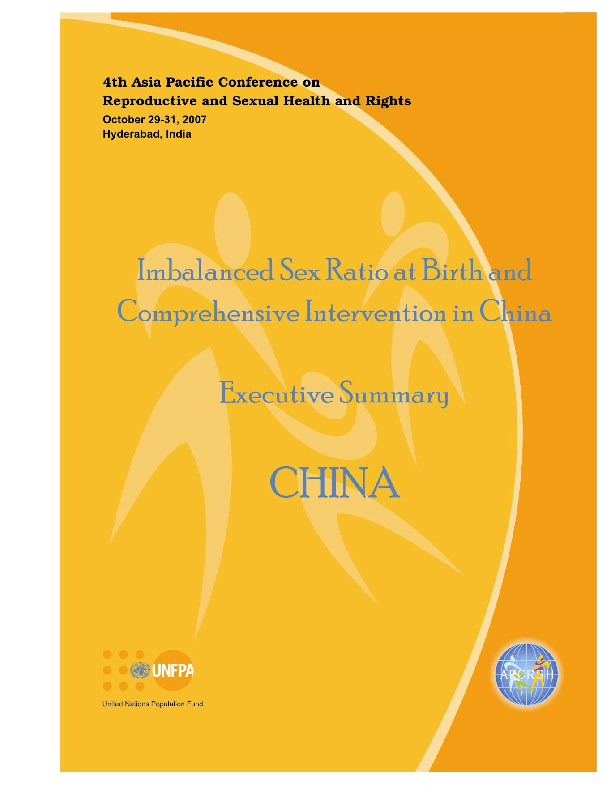
Resources
Imbalanced Sex Ratio at Birth and Comprehensive Intervention in China : Executive Summary
Resource date: 2007
Author: UNFPA
Publisher: UNFPA

Resources
Resource date: 2007
Author: UNFPA
Publisher: UNFPA
Discrimination against girls has existed throughout Chinese history. However, the abnormally high sex ratio at birth (SRB) and excess female child mortality (EFCM) recorded in China in recent years reflect not only women’s continuing low social status, but also the deteriorating survival environment for girls. This paper reviews studies on survival rates of girls in China, as well as the corresponding intervention activities of the Government of China. Using data from several past censuses and studies, this paper analyzes the current uneven sex ratio and high mortality rates among girls in China. It discusses the causes of the deteriorating survival environment for girls, as well as its demographic and social implications. The discrimination against girls occurs in both pre-natal and post-natal periods: sex-selective abortion of female foetuses leads to abnormally high SRB, while neglect of girls results later in excess female child mortality. The sex ratio of children age 0-4 in China has been abnormal for the past two decades, a trend caused mainly by high SRB and EFCM. Indeed, SRB has increased steadily since the 1980s, with higher levels observed in rural areas, increasing values with birth order (the second, third born, etc.), and abnormally high levels in provinces with strong traditional culture.